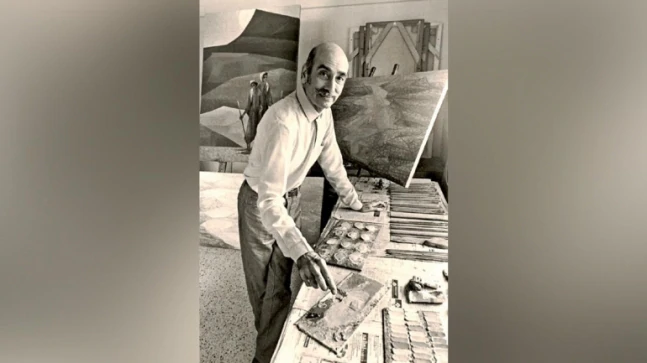
[ad_1]
Mumbai’s Akara Art gallery’s latest, Pilgrim Souls, Soaring Skies, Crystalline Seas, opened recently with Covid guidelines in place. The show, on till December 10, covers Jehangir Sabavala’s seven-decade-long artistic sprawl with 15 paintings from different phases of his life. “At least 11 of these have never been in public view before,” promises Akara Art founder Puneet Shah. One of them, ‘Elegy’ (1967), was traced to a private stash in Switzerland. Rendered in a mixture of abstract and cubism with a tender palette, ‘Elegy’, the owner had hoped, would “someday return to India, where he felt it truly belonged”.

For long, Sabavala’s fame was obscured by the haze of the more popular post-Independence artists such as M.F. Husain, S.H. Raza and Tyeb Mehta. But in the past few years, demand for his works has surged. Born into a Parsi family in 1920s Bombay, Sabavala’s first love was the stage. But being painfully shy, painting and its attendant anonymity offered him both a refuge as well as freedom. He studied in London and post-war Paris, where he met his wife, Shirin. When he returned to a free India, the Bombay artscape was dominated by the Progressive Artists’ Group. A modernist like them, the artist who died in 2011 aged 89, never fully qualified as a cubist or an impressionist, though he borrowed from both. Instead he saw himself, as he once told Deccan Herald, “as a pilgrim, moving towards unknown vistas”.
Renowned as much for his old-school charm, complete with a Dali-esque stache, as for his serene landscapes and solitary figures, the exhibition also affirms his lifelong quest for perfection. Many with knowledge of his art will find familiar motifs in ‘Pilgrim Souls…’. There’s the sea, harbour and headlands along with peripatetic shepherds and monks in quiet contemplation. But the show’s real aim is to highlight his mastery over light. Ranjit Hoskote, Sabavala’s official biographer, says: “Across the 1960s and 1970s, the presence of light, dawn’s radiance, sunlight diffused through mist, the twilight, became one of his key subjects.” This meticulous engagement with nature transformed a simple landscape into what Henri Matisse called “art of purity and serenity”
[ad_2]
Source link